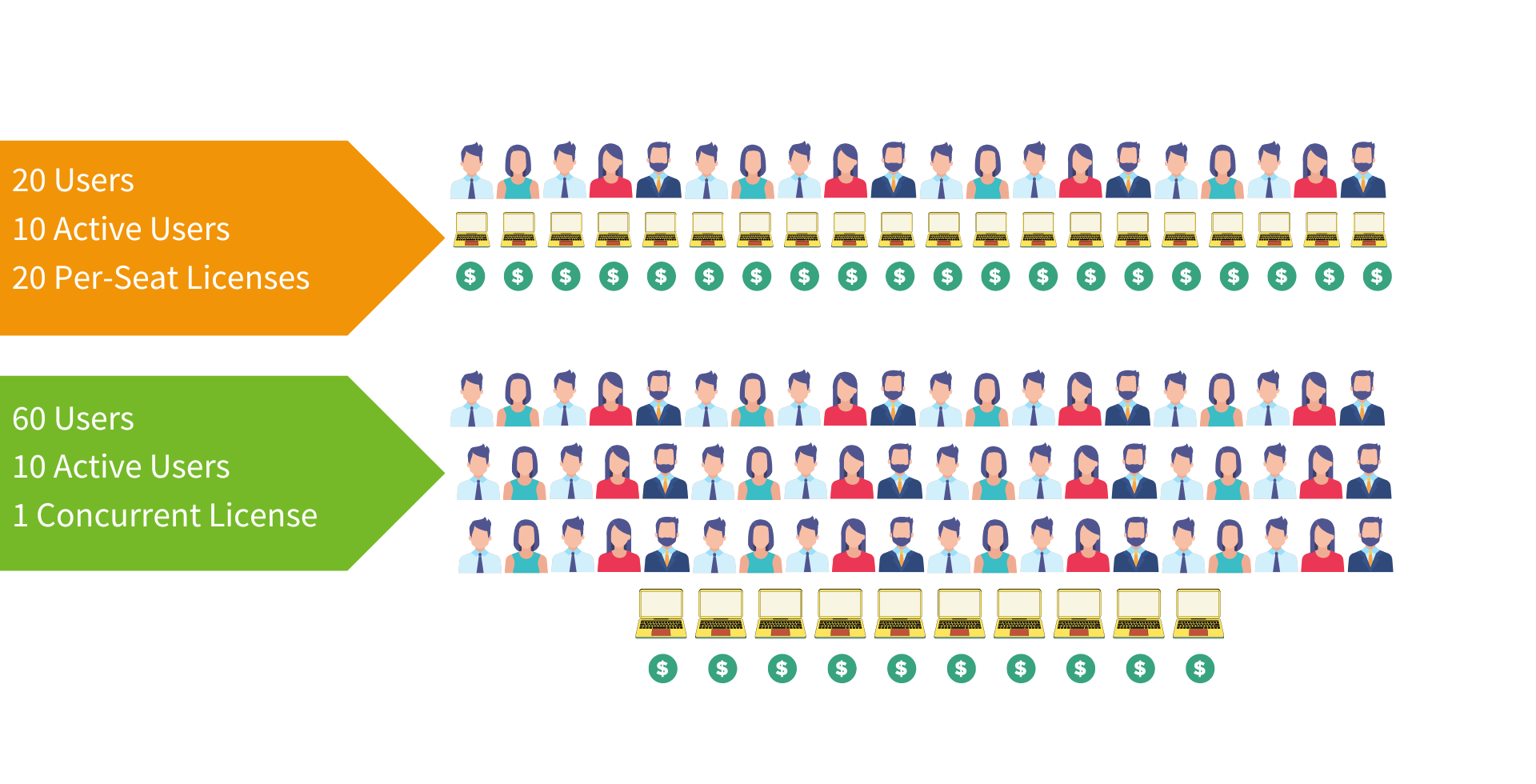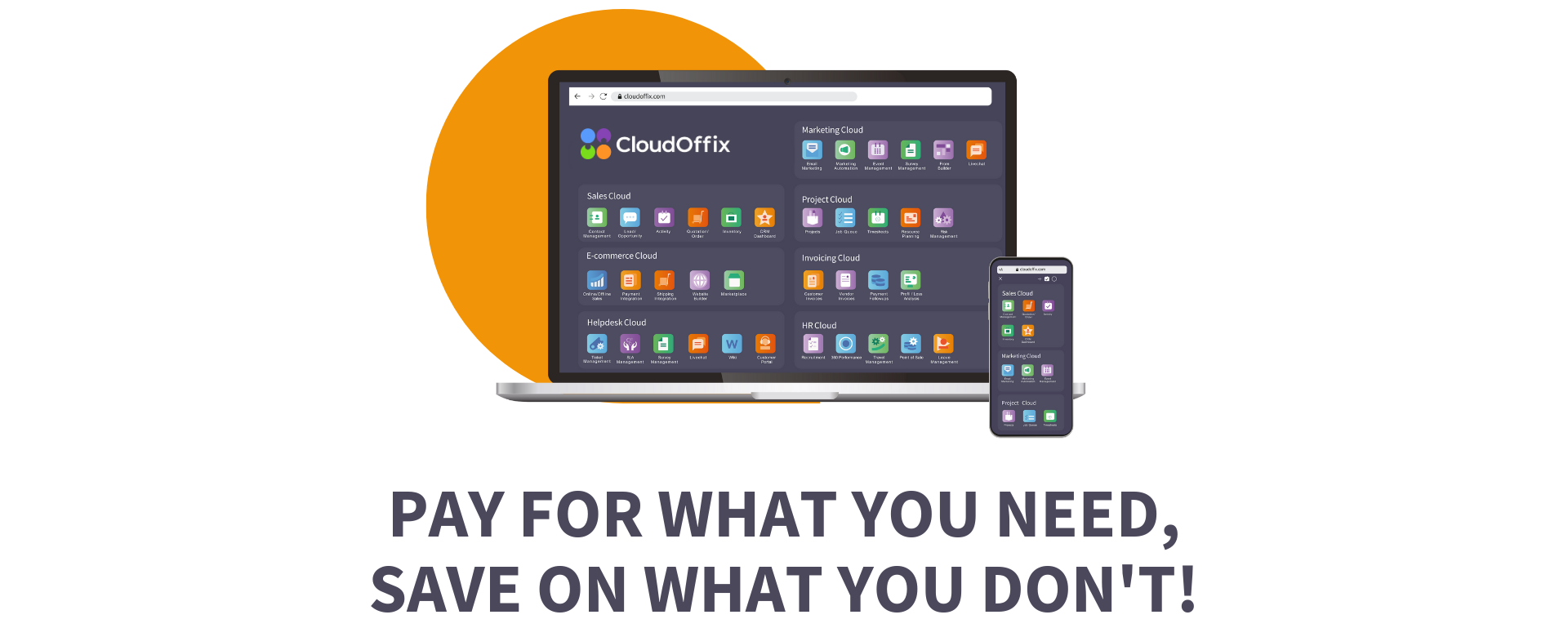Gleichzeitige Lizenzierung
(Concurrent)
CloudOffix ist der erste und einzige Cloud-Anbieter, der sowohl Nutzungs- als auch Benutzerlizenzen anbietet.
Was ist eine gleichzeitige Lizenzierung (Floating-Lizenz)?
Flexibilität und Kosteneinsparungen durch gleichzeitige Lizenzierung in SaaS-Softwaremodellen
Eine gleichzeitige Softwarelizenz, auch als Floating-Lizenz bekannt, ist eine Endbenutzerlizenz, die auf der Anzahl gleichzeitiger Benutzer basiert, die auf ein System zugreifen. Im Gegensatz zu traditionellen Softwarelizenzen ermöglichen gleichzeitige Lizenzen die Erstellung unbegrenzter Benutzerkonten. Allerdings können nur eine begrenzte Anzahl von Benutzern gleichzeitig in das System eingeloggt sein.
Zum Beispiel, bei einer zehnbenutzer gleichzeitigen Softwarelizenz ist es verboten, dass der elfte Benutzer auf das System zugreift, sobald zehn Benutzer eingeloggt sind. Wenn sich einer der anfänglichen zehn Benutzer ausloggt, kann sich der nächste Benutzer einloggen. Gleichzeitige Lizenzen werden häufig in SaaS (Software as a Service) Lizenzmodellen verwendet und bieten Flexibilität und effiziente Nutzung von Softwarelizenzen.
Flexibel
Zugang von überall und jederzeit, Zugriff einfach übertragbar.
Kosteneffizient
Nur für genutzte Lizenzen zahlen, bei gelegentlichem Zugriff sparen.
Optimale Nutzung
Festlegen von gleichzeitigen Zugriffsstufen, um Arbeitsablaufstörungen zu vermeiden.
Unbegrenzte Konten
Öffnen Sie so viele Konten wie benötigt auf mehreren Geräten.
Zum Beispiel benötigen Sie Zugang zum System für 1000 Personen, die ab und zu darauf zugreifen müssen. Auch wenn nur ein Bruchteil von ihnen das System täglich nutzt, müssen Sie 1000 benutzerbezogene Lizenzen erwerben, um alle Personen abzudecken. Bei einem gleichzeitigen Lizenzmodell für dasselbe Beispiel reicht es aus, die Anzahl der Lizenzen zu kaufen, die gleichzeitig verwendet werden.
Die Vorteile von gleichzeitigen Lizenzen
Anstatt Hunderte oder Tausende von Lizenzen pro Sitzplatz zu abonnieren, können Sie auf sehr kosteneffektive Weise das Modell der gleichzeitigen Lizenzen abonnieren. Sie können so viele Benutzerkonten erstellen, wie Sie benötigen, und die Anzahl der gleichzeitigen Lizenzen entsprechend der Anzahl der Benutzer erhöhen, die sich gleichzeitig ins System einloggen. Langfristig ist offensichtlich, dass gleichzeitige Lizenzen sehr attraktiv und kosteneffektiv sind.
Ein Beispiel für das Concurrent-Licensing-Modell
.png)
Angenommen, ein Unternehmen hat 20 Mitarbeiter, die Zugriff auf ein bestimmtes Software-Tool benötigen. Wenn sie für jeden Mitarbeiter einzelne Lizenzen kaufen würden, könnte dies sie jeweils $500 pro Lizenz kosten, was Gesamtkosten von $10,000 ergibt.
Wenn sie stattdessen die gleichzeitige Benutzerlizenzierung verwenden würden, müssten sie möglicherweise nur 10 Lizenzen erwerben, um die maximale Anzahl von Mitarbeitern abzudecken, die erwartungsgemäß gleichzeitig auf die Software zugreifen. Dies würde ihre Gesamtkosten auf $5.000 reduzieren und somit eine Ersparnis von $5.000 ermöglichen.

.png)